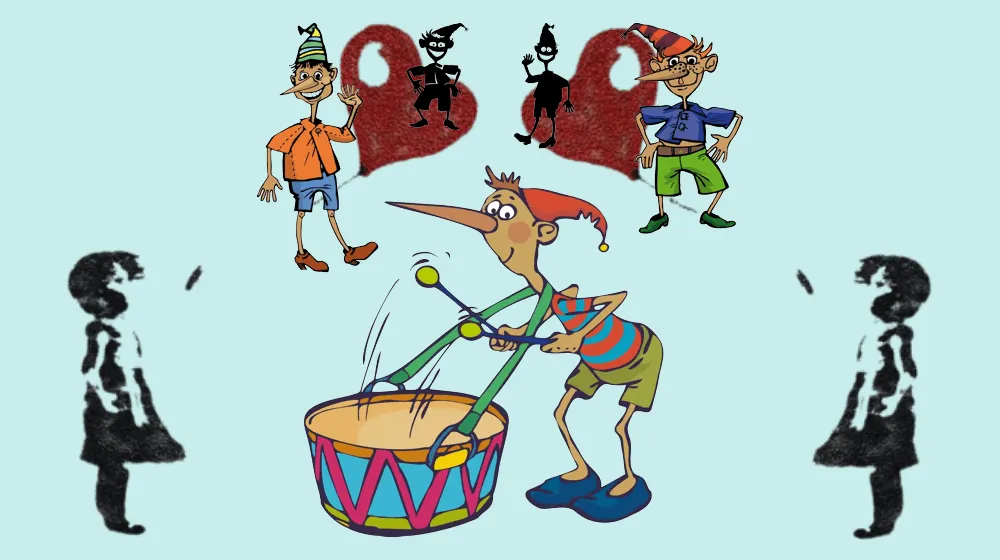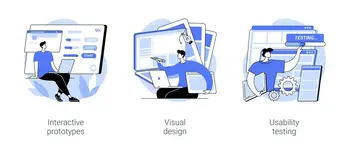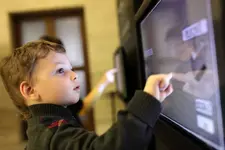
Table of contents
Interactive animation potential is very high because it can be used to engage people in a new and exciting way. It is more than just memes, it can be used to create interactive games, action potential simulations, and infographics. Interactive animation is effective because it allows users to interact with the content, which makes it more engaging and memorable. Businesses and organizations have used interactive animation to effectively communicate with their audience.
The Breaking Bad Timeline Animated Infographic is a great example of how interactive animation can be used to tell a story. This infographic is interactive, which allows users to explore the timeline at their own pace and learn more about the show.
As the popularity of interactive animation continues to grow, we can expect to see even more innovative and creative applications for this powerful tool. Interactive animation is the future of engaging content, so let’s embrace it!
The Evolution of Interactive Animation

Interactive animation has come a long way since its inception. From its earliest forms to the current state of the industry, it has evolved into a powerful tool for engaging audiences and conveying complex ideas.
(a) Early Forms of Interactive Animation
The earliest forms of interactive animation can be traced back to the 1960s and 70s when computer graphics were first developed. At that time, interactive animations were mainly used for scientific and educational purposes. They were simple, often consisting of basic shapes and colours, and were controlled by the user through a keyboard or joystick.
As technology advanced, so did interactive animation. In the 1980s and 90s, interactive animation became more sophisticated, with the introduction of graphical user interfaces (GUIs) and the mouse. This allowed for more intuitive and natural interactions with animation and paved the way for the development of video games and other interactive media.
(b) The Rise of Memes and Its Impact on Interactive Animation

In recent years, memes have become a dominant force in popular culture. Memes are a form of interactive animation that typically consist of a short, looping video or animation, accompanied by a caption or text overlay. They are often humorous, irreverent, and highly shareable.
The rise of memes has had a significant impact on interactive animation. Memes have helped to popularize interactive animation among a wider audience, and have demonstrated the power of short, engaging animations for conveying ideas and emotions.
(c) The Current State of Interactive Animation
Today, interactive animation is used in a wide range of industries, from entertainment and advertising to education and healthcare. It is a powerful tool for engaging audiences, conveying complex ideas, and creating immersive experiences.
The global interactive animation market is expected to
grow at a CAGR of 12.6% between 2021 and 2030
. This growth is being driven by the increasing demand for interactive and engaging content, as well as advances in technology such as virtual and augmented reality.
In conclusion, interactive animation has come a long way since its earliest forms. From simple scientific demonstrations to complex virtual reality experiences, it has evolved into a powerful tool for engaging audiences and conveying complex ideas. As technology continues to advance, the possibilities for interactive animation are endless.
Beyond Memes: Exploring the Possibilities
Interactive animation has come a long way since the days of simple GIFs and memes. Today, it is being used in a variety of fields, from education to advertising to gaming. With the rise of social media, interactive animation has become an increasingly popular way to engage with audiences and create memorable experiences.
1. Interactive Animation for Education
Interactive animation is an effective tool for education, as it can help students understand complex concepts in a fun and engaging way. For example, interactive animations can be used to teach science concepts such as the water cycle or the human body. They can also be used to teach math concepts such as fractions and geometry.
Interactive animations can
improve the learning outcomes of students
. This is because interactive animations allow students to explore and interact with concepts in a way that traditional teaching methods cannot.
2. Interactive Animation for Advertising
Interactive animation is also being used in advertising to create engaging and memorable experiences for consumers. For example, interactive ads can allow consumers to customize products, play games, or explore virtual environments.
According to a study by the
Interactive Advertising Bureau
, interactive ads can increase brand awareness and increase purchase intent. This is because interactive ads allow consumers to engage with brands in a way that traditional ads cannot.
3. Interactive Animation for Gaming

Interactive animation has always been a key component of gaming, as it allows players to interact with virtual worlds and characters. However, with the rise of virtual reality and augmented reality, interactive animation has become even more immersive.
According to
Fortune Busine Insight
, the global VR gaming market is expected to reach $53.44 billion by 2028. This is because interactive animation allows players to fully immerse themselves in virtual worlds, creating a more engaging and memorable gaming experience.
4. Interactive Animation for Social Media
Finally, interactive animation is being used in social media to create engaging and shareable content. For example, interactive animations can be used to create quizzes, polls, and games that users can share with their friends.
According to
Upland Software
, interactive content generates up to twice as many conversions as static content. This is because interactive content allows users to engage with brands in a way that static content cannot. Action potential interactive games can be used to engage visitors to your site.
In conclusion, interactive animation has come a long way since the days of simple GIFs and memes. Today, it is being used in a variety of fields, from education to advertising to gaming. With the rise of social media, interactive animation has become an increasingly popular way to engage with audiences and create memorable experiences.
The Future of Interactive Animation
As technology continues to advance, the future of interactive animation is looking bright. With the rise of emerging technologies, the role of AI, and the ethical considerations that come with creating interactive animations, the industry is poised for growth and innovation.
i. Emerging Technologies and Their Impact on Interactive Animation
One of the most exciting developments in interactive animation is the use of emerging technologies. Augmented reality (AR) and virtual reality (VR) are becoming increasingly popular, and they offer new opportunities for interactive animation.
In addition to AR and VR, other emerging technologies like haptic feedback and motion tracking are also changing the way we interact with animations. Haptic feedback allows users to feel physical sensations while interacting with animation, while motion tracking allows animations to respond to the user’s movements.
ii. The Role of AI in Interactive Animation

Artificial intelligence (AI) is also playing an increasingly important role in interactive animation. AI can be used to create more realistic and dynamic animations, as well as to personalize animations for individual users. For example, AI can analyze a user’s behaviour and preferences to create a customized experience.
However, there are also ethical considerations when it comes to using AI in interactive animation. As AI becomes more advanced, there is a risk that it could be used to create harmful or misleading content. It is important for creators to consider the potential consequences of using AI in their animations.
iii. The Ethics of Interactive Animation
Ethics is another important consideration when it comes to interactive animation. With the ability to create realistic and immersive experiences, there is a risk that interactive animations could be used to manipulate or deceive users. It is important for creators to be transparent about their intentions and to use their powers for good.
One example of ethical considerations in interactive animation is the use of data. As animations become more personalized, they may collect and use data about users. Creators need to be transparent about what data they are collecting and how it will be used.
In conclusion, the future of interactive animation is looking bright. With the rise of emerging technologies, the role of AI, and the ethical considerations that come with creating interactive animations, there are many exciting opportunities for growth and innovation. However, it is important for creators to consider the potential consequences of their work and to use their powers for good.




















